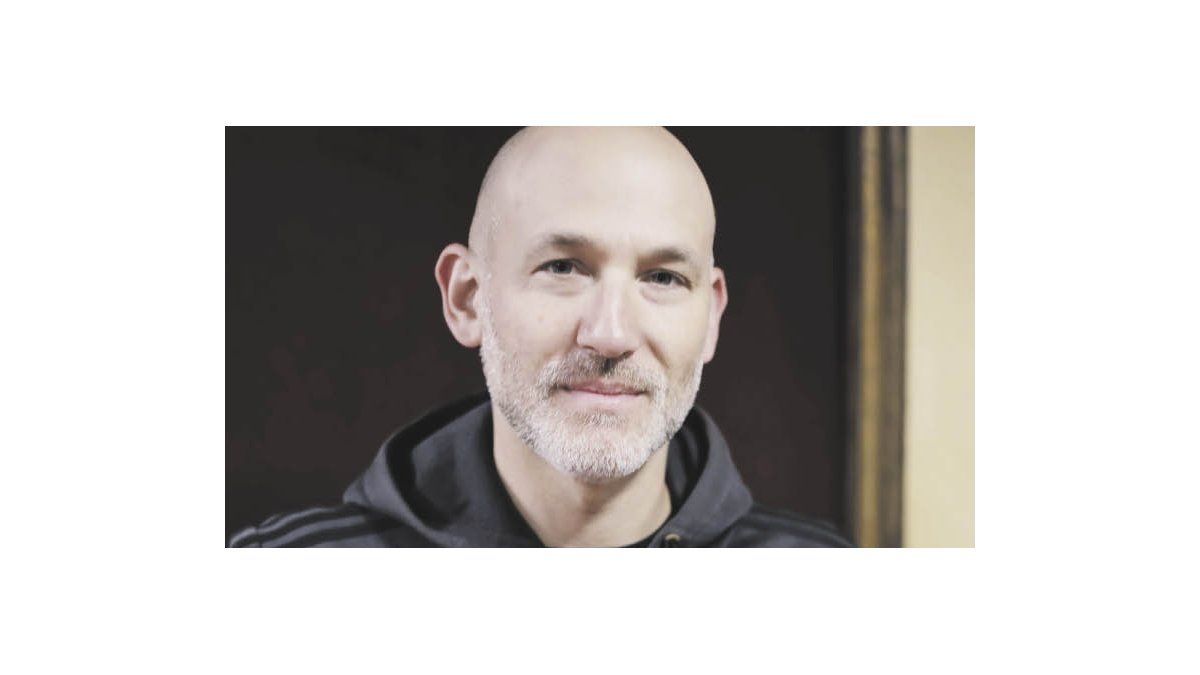For almost a decade Feldman dedicated himself to researching perception, models of representation, procedures and language starting with his first “The Spectator”; followed by “The disintegration (Test 2)”; “The conventions (Test 3); “The weather (Test 4)”; “Rhythm (Test 5)”; “The rhyme (Test 6)” and “The hyperlink (Test 7)”. We talk with him:
Journalist: How is this test with translation as the axis?
Matthias Feldman: We live in a world with such a strong crisis of representation, the information that exists is so vast, that naming becomes very complex. However, there is a tendency to want to explain everything in a simple way, everything is reduced to a “crack”, that is why horrors such as “flat earthing” arise, due to the need to simplify a world that is not simple at all. We think about translation, not only focusing on the language, but also on what happens before translating: interpretation. The context, the time, the bias, the interests, are determining factors when translating. So we try to unveil layers of the material we are working with, like a kind of archaeology. We tried to make things visible that perhaps at first glance could not be seen. Spin things around until you get dizzy. Reveal but also add meanings that were not there. Translating is printing.
Q.: Does this work take a step beyond “El hipervínculo”?
FM: In “El hipervínculo” we reflect on the perception that has become accustomed to receiving fragmented, juxtaposed things, thanks to Instagram, Facebook, the newspaper, television. A great fragmented tide of things reaches us and there we wondered what happens if a play has that same structure. In Translation, the question is, what if it’s all at the same time?
Q.: What story does the play tell?
FM: It revolves around some young women at the end of the 1960s in Germany, belonging to the industrial bourgeoisie, who become revolutionaries, highly inspired by the Latin American struggles of the 1950s: Che Guevara, Cuba. These young German women translate the Latin American struggle into their context. At that point the work is playing with the translation around the language. It is translated from German to Spanish and back to German, there is dubbing, censorship, etc. But then you try to translate not only the language but also the events, the gestures, the expressions. What could we contribute to the translation (something so studied by very erudite people)? Can gestures, expressions, events be translated? We try to translate theatrical language.
Q.: How do “The hyperlink” and “The translation” connect in relation to algorithms and networks?
FM: We are used to simplistic interpretations of the world. There is a tendency to the slogan, to pretend to understand the world in its entirety, but it is not possible. Thanks to the algorithms in the networks, the apps, and their artificial intelligence, tailored content is offered. The critical spirit is being lost. Everything flattens out, that’s why flat earthing, because of the anguish of not being able to deal with the world and its mess. That is why it is so easy to fall for fake news. We seek to go in another direction although we may fail in the attempt.
Q.: In your works there is criticism of the middle class and the obsessions that become religion. He said he was inspired by, among others, Pier Paolo Pasolini.
FM: Pasolini always resonates. For example he was very critical of the French Mayo. He said they were rich kids fighting with their parents. Today putting yourself in crisis seems to be offensive. Beyond Pasolini, in this work I relied heavily on the notions of Aby Warburg, a student of Art History, who argued that in every image there are all times at the same time, like eel soup, and that the past try to be present all the time. I took hold of that to play with the interpretation. And in order to see those resonances that Warburg was talking about, I needed the repetitions. Using, again, the repetitions, something that I usually use a lot, and that I usually name as Vertical Theater. I don’t think of the scenes chronologically, that is, horizontally, but vertically.
P.: You usually explore time by slowing it down. How does this experiment impact theatrical and anxious audiences?
FM: In this case I do not use the resource of slowing down the scenes as I did in Test 4 “Time” but the scenes are repeated. On the other hand, I don’t know what “people like” or “what people need”. I leave that to Netflix. The hyperlink, it was 3 hours long, had 180 characters, and we did very well. We think of all our work as a function of the spectator, as a function of what is going to happen to him, of his experience. It is not for us. What interests me is that clash with the viewer. As Borges said, the flavor does not exist in the apple but in the clash of the palate with the apple. In the tests our center is the spectator.
Q.: What will test 9 be?
FM: I think this will be the last one, it’s a feeling I had before I started writing it, I felt it was the end of a project I’ve been doing since 2013. Perhaps it’s a completed cycle.
Source: Ambito
David William is a talented author who has made a name for himself in the world of writing. He is a professional author who writes on a wide range of topics, from general interest to opinion news. David is currently working as a writer at 24 hours worlds where he brings his unique perspective and in-depth research to his articles, making them both informative and engaging.




